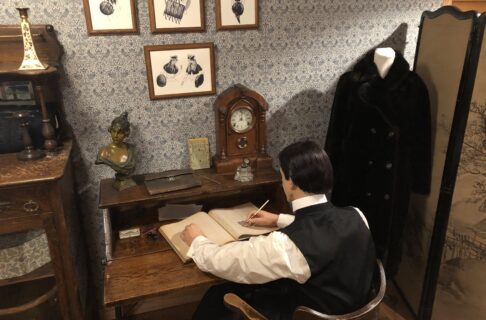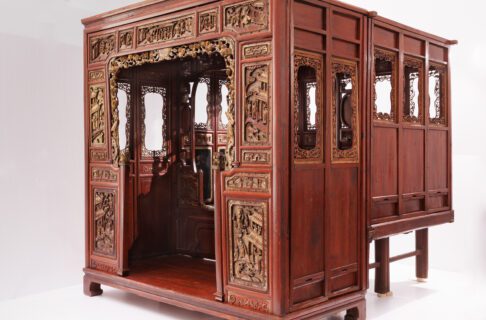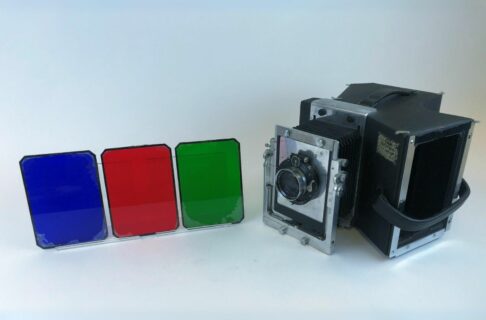Posted on: Tuesday June 3, 2014
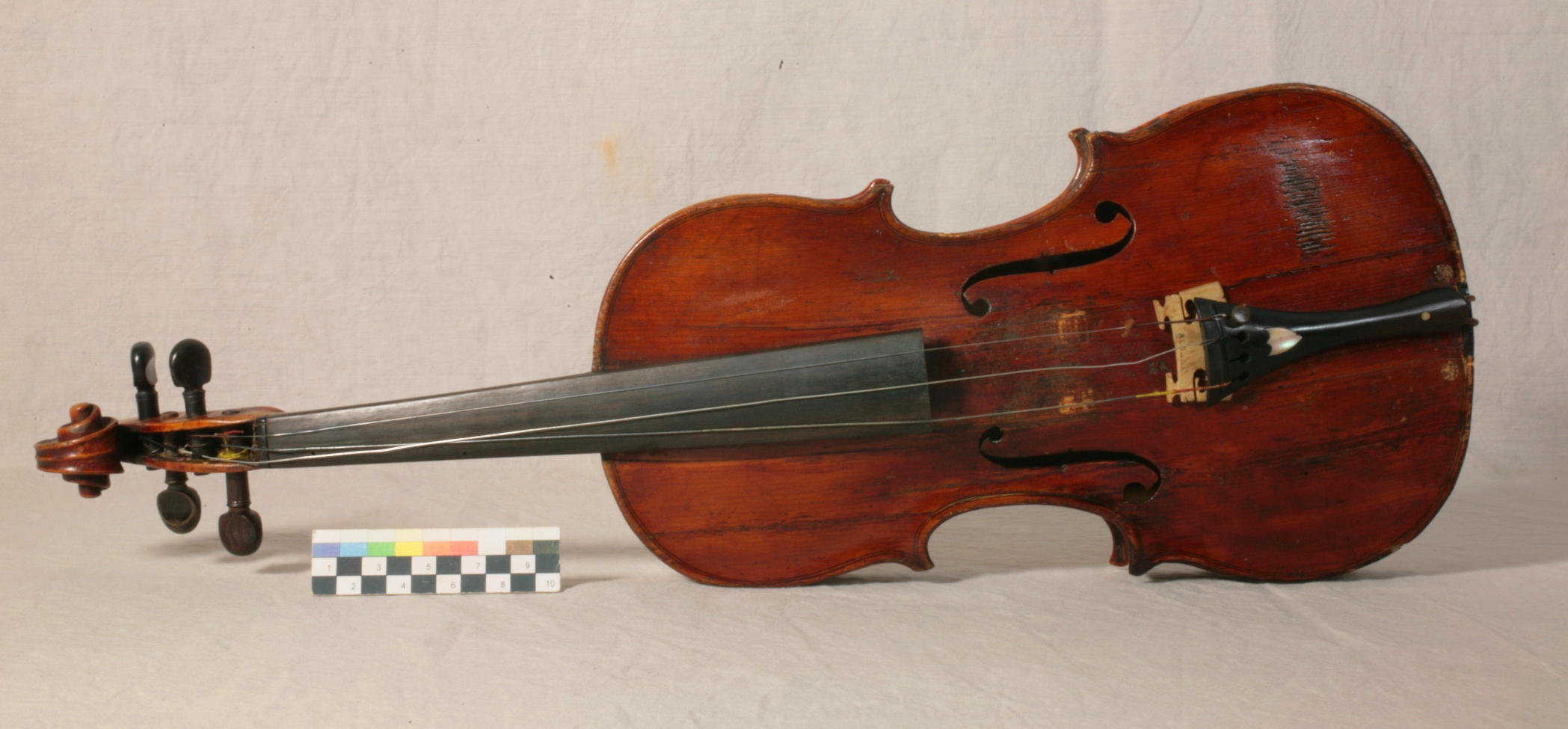
This last winter I was pleased to receive a phone call informing me that the Sutherland family was interested in donating an artifact that had been in the family for 6 generations and had been in Manitoba most of that time. The Sutherland Violin, as we call it here at The Manitoba Museum, came with Alexander (Sodger) Sutherland in 1815 on his voyage from Scotland to the Red River Colony. Soon after his arrival he met and then married the famed Catherine McPherson, by all accounts a strong personality in the fledgling colony. While the instrument has been ensconced in Manitoba for almost two centuries, its earlier history is murky. Some preliminary views of the violin by expert luthiers suggest it may have either a Scottish or Saxon (German) origin. Certainly much can be read just by taking a very close look…
The Sutherland Violin. The strings have been loosened to relieve tension on the fragile front of the instrument. Copyright The Manitoba Museum.
Firstly, the violin has been played quite a bit. Looking at the pegs, we see the holes were worn out with tuning. They were filled and then re-drilled to produce a tighter fit. The pegs themselves are mismatched: two are ebony, one is pear wood, and the other is rosewood.
Secondly, the violin was at some point crushed. The top, a single piece of pine, was badly damaged and a repair was attempted but not well executed. The back of the violin was made with maple and is in excellent condition, nicely figured with “flames” or “curls” (the streaks of contrasting wood hues on the surface). Violins are all made with a combination of soft wood fronts and hard wood backs for the best combination of resonance and structural strength.
Finally, there are design elements of the violin that may help identify the original maker. The eye of the scroll, the length of the corners, and some asymmetry in the body and sound holes are all distinctive.
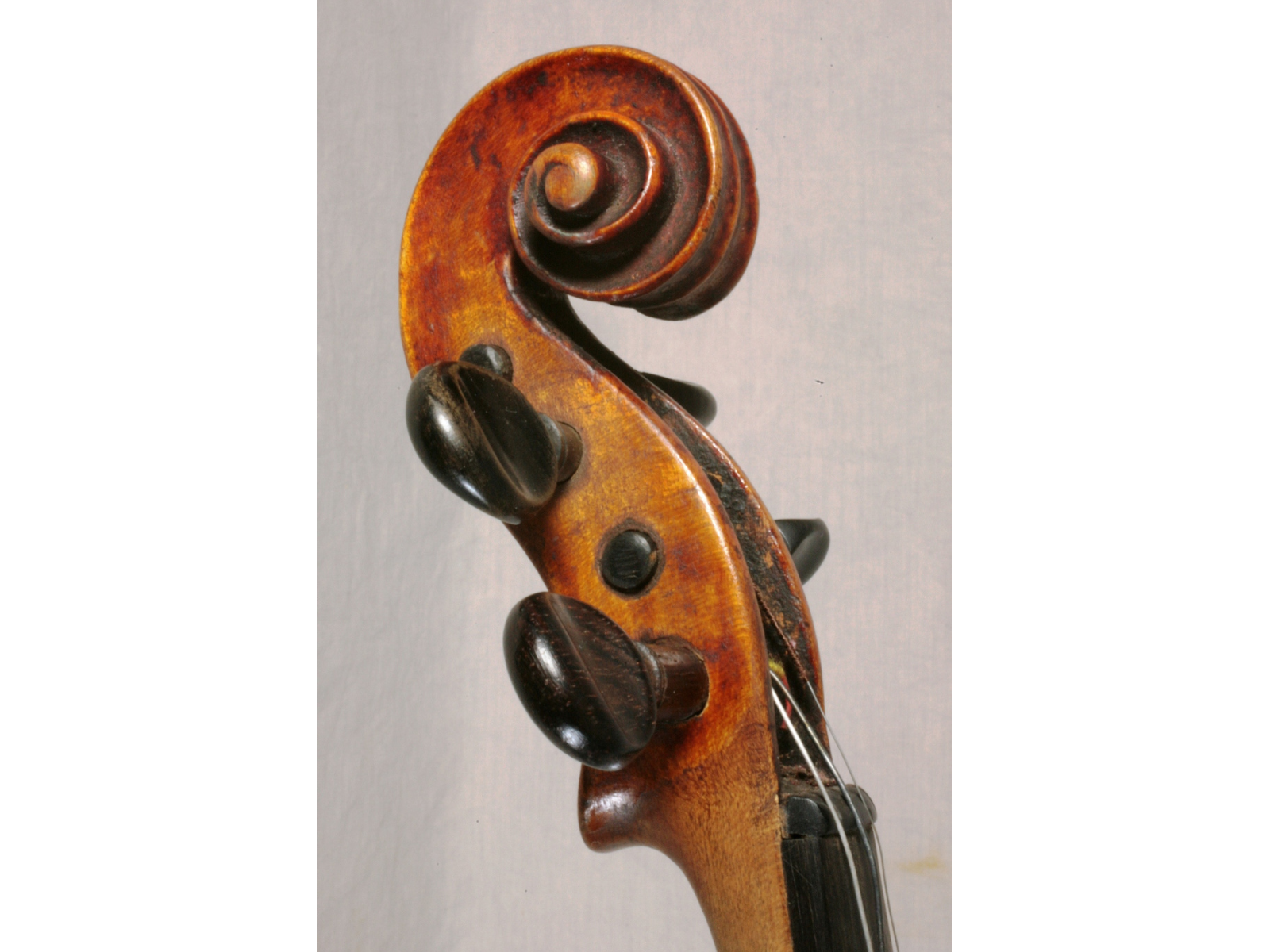
Note filling in lower peg hole. Copyright The Manitoba Museum.
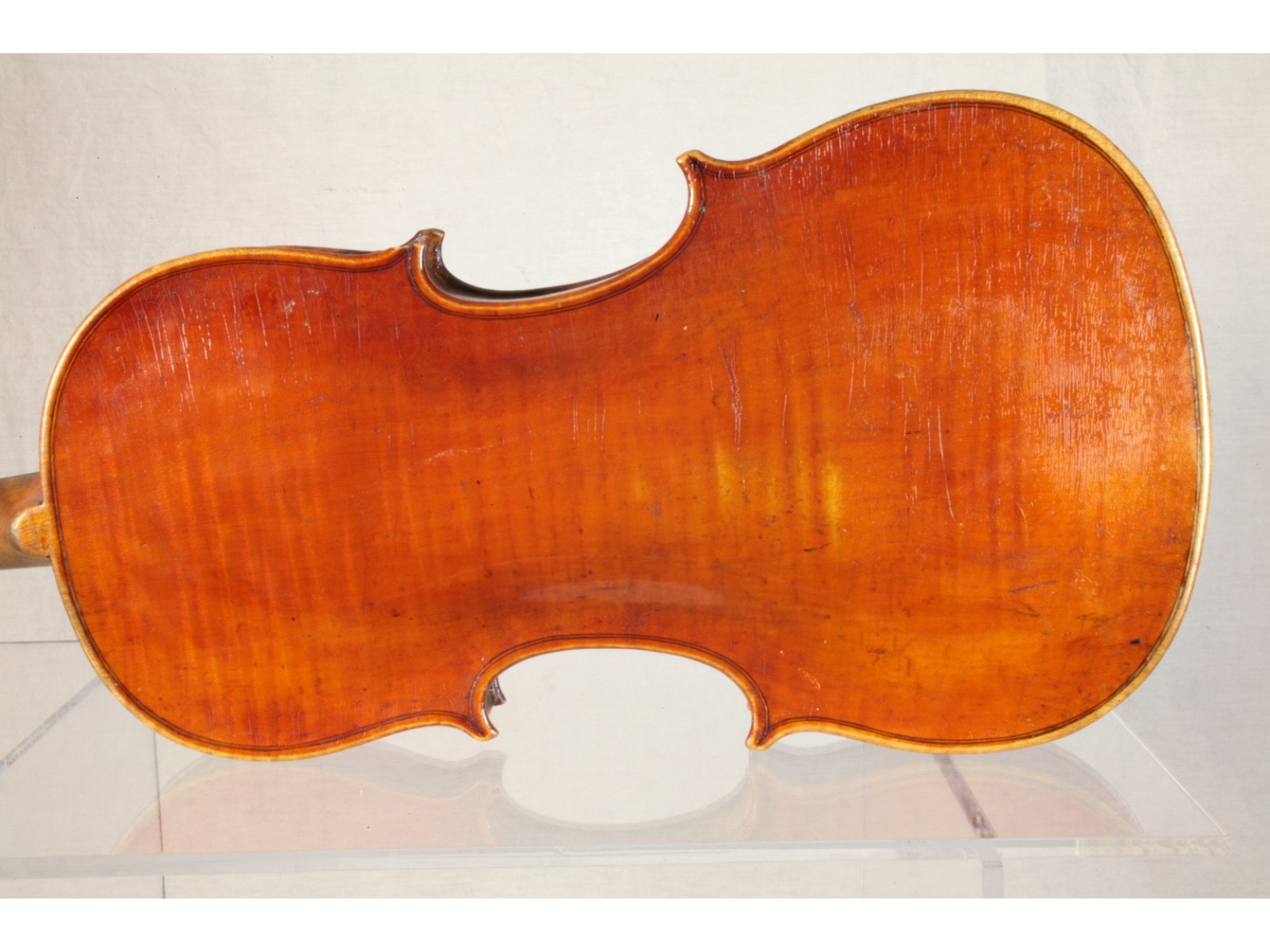
The back of the violin is a much brighter colour than the front. Copyright The Manitoba Museum
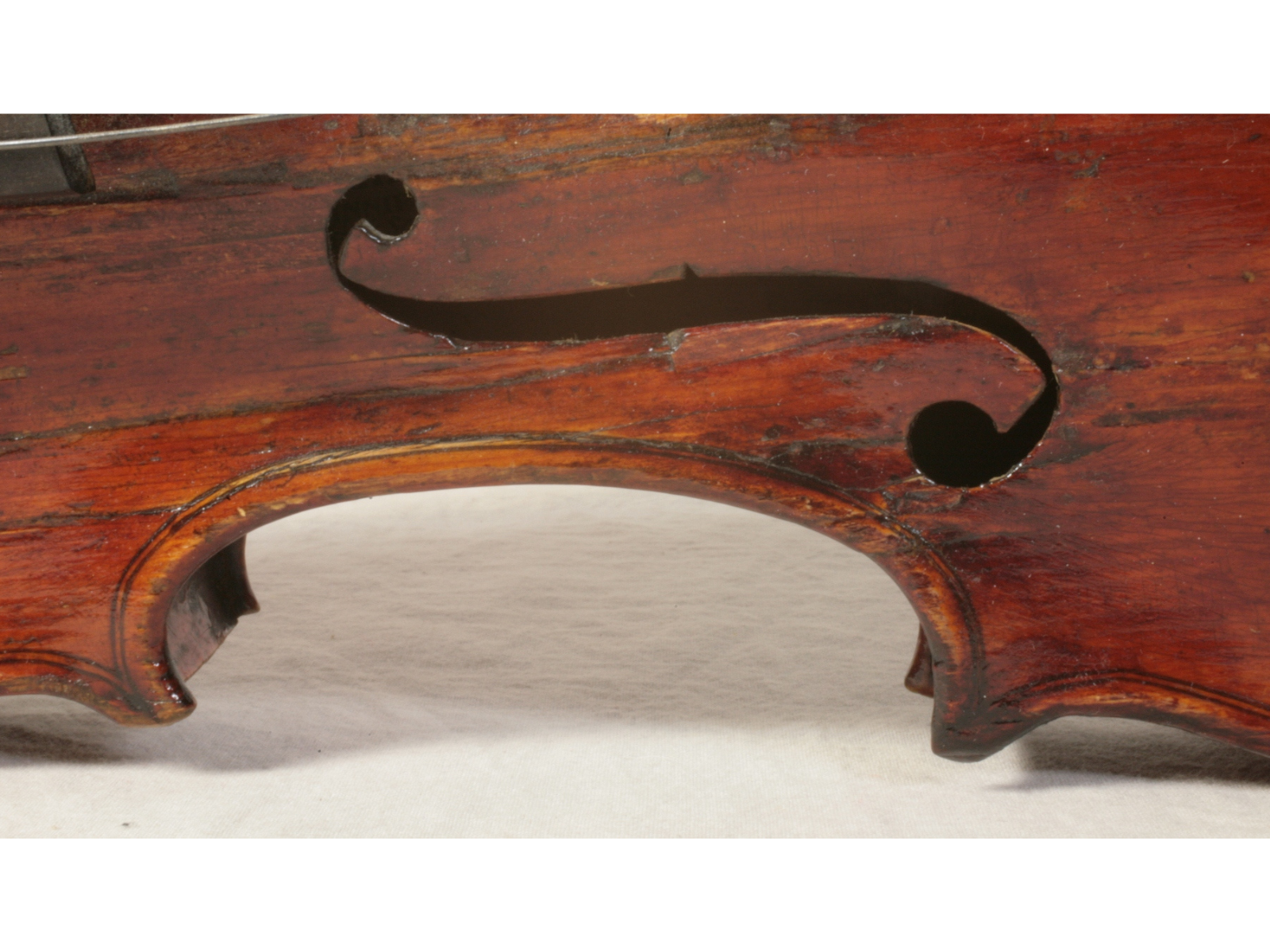
Sound hole and elongated corners. Copyright The Manitoba Museum.
The violin was “remodelled” in 1935 by John Smith of 617 Furby St., Winnipeg, who was a well respected luthier in his own right. His 100+ violins can today still be found in Europe and North America.
Our plan at this time is to introduce the violin in the Log Cabin Exhibit in our Grasslands Gallery. The Log Cabin provides a window into the conditions of daily life at Red River in the mid-19th century, and includes a number of original pieces. For instance, Catherine McPherson’s spinning wheel, evidently also brought from Scotland, is in the cabin. Wouldn’t it be entirely appropriate if her spinning wheel was reunited with her husband Alexander’s violin in the same home once again?




